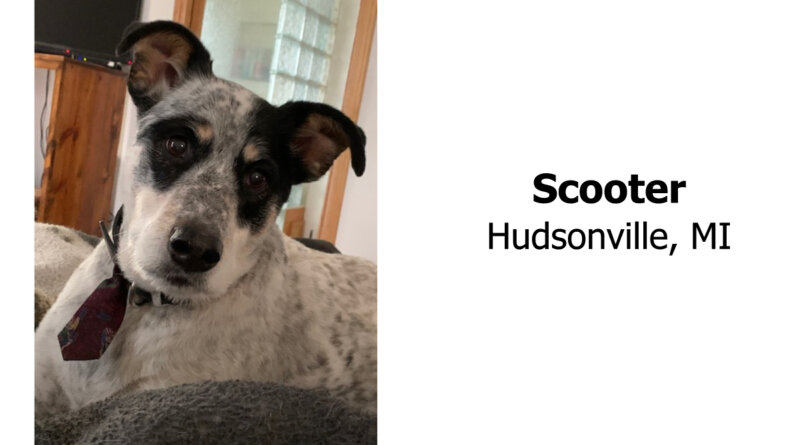A good reminder on Ethoxyquin – Truth about Pet Food
Do you know about this common pet food preservative? You should.
My personal history with ethoxyquin.
In 1991 I was a typical pet owner, giving my dogs the most popular pet food sold. Almost overnight a tumor appeared on my dog’s pelvic bone. With a trip to the vet, we learned the worst news – bone cancer. My vet – who knew more about pet food in 1991 than most vets do today – told me her cancer was probably caused by a chemical preservative used in the pet food. He told me the chemical preservative was used to extend the shelf life of the pet food. The preservative was ethoxyquin.
In 1991 I didn’t really understand what ‘shelf life’ was, had no clue what a ‘chemical preservative’ was, and had never called a pet food company before. But after being told I had two weeks to say goodbye to my best friend, this was something I had to learn more about. I called this pet food company and only had the nerve to ask one question; “How long will the dog food stay fresh?” What they told me changed my life forever. This pet food company proudly stated the dog food “would stay fresh for 25 years“.
I had to euthanize my beloved dog 2 weeks later.
This website has written about ethoxyquin numerous times in the past, needless to say – this is an ingredient I am very sensitive to and aware of. It’s been several years since I’ve shared information about ethoxyquin – and thanks to a new White Paper published by GMO Free USA and Clean Label Project, we can provide new information about this dangerous pet food preservative again.
Titled “Ethoxyquin: Is there something fishy about your pet food?“, the paper provides a history to the “darker side of Ethoxyquin’s story.”
“Ethoxyquin was initially registered as a pesticide in 1965 as a deterrent of scald in pears through post-harvest indoor application. The Environmental Protection Agency’s own toxicity documentation states that “The primary target organs affected by ethoxyquin in experimental animals are the liver and the kidneys.”
Veterinarian Gloria Dodd warned the FDA about ethoxyquin in 1992.
“Her letter highlighted the epidemic of “chronic degenerative diseases such as generalized allergies, arthritis,dermatitis, congestive heart failure, kidney failure, liver pathologies, diabetes, tumors and cancer” she observed during her tenure as a veterinarian. Her letter went on to highlight the use of Ethoxyquin and the marked difference in domestic dog bones, muscles, and overall health compared to Australian pets,who at the time, were still largely being fed fresh meat as opposed to the American pet diet that had largely transitioned to commercial kibble and canned food.”
FDA ignored Dr. Dodds concerns, this preservative is still commonly used today. But…it’s hidden behind regulations that don’t protect our pets.
“It’s actually quite rare to find ethoxyquin mentioned on any pet food label at this point, but that doesn’t mean it’s not found in the finished product. In other words, just because you don’t see ethoxyquin on the label, it doesn’t mean it isn’t present in the finished product.”
Ethoxyquin is most often added by the ingredient supplier, not the pet food manufacturer. The FDA does not require manufacturers to disclose on pet food labels preservatives such as ethoxyquin that are added by the ingredient supplier. Your pet food manufacturer knows, but you don’t.
The most common ingredient that is preserved with ethoxyquin is fish meal. Over the years, industry representatives have shared with me that other meal ingredients (such as chicken meal or beef meal) and rendered fat ingredients (animal fat or chicken fat) could be preserved with ethoxyquin too. Again, ethoxyquin is added by the ingredient supplier, it is not required to be listed on the pet food label. Pet owners should ask their manufacturers – in writing – if ethoxyquin is added to any ingredient (by the ingredient supplier).
We encourage pet owners to send the FDA an email, asking them to require pet food labels to disclose all chemical preservatives used – even if the preservative was added by the ingredient supplier. You can email FDA at: AskCVM@fda.hhs.gov
Share the White Paper with your veterinarian, and encourage him/her to inquire if prescription pet foods or any brand they recommend includes ethoxyquin.
To read the full White Paper, Click Here.
From personal experience, ethoxyquin is NOT something you want in your pet’s food.
Wishing you and your pet(s) the best,
Susan Thixton
Pet Food Safety Advocate
TruthaboutPetFood.com
Association for Truth in Pet Food

Become a member of our pet food consumer Association. Association for Truth in Pet Food is a a stakeholder organization representing the voice of pet food consumers at AAFCO and with FDA. Your membership helps representatives attend meetings and voice consumer concerns with regulatory authorities. Click Here to learn more.
What’s in Your Pet’s Food?
Is your dog or cat eating risk ingredients? Chinese imports? Petsumer Report tells the ‘rest of the story’ on over 5,000 cat foods, dog foods, and pet treats. 30 Day Satisfaction Guarantee. www.PetsumerReport.com
Find Healthy Pet Foods in Your Area Click Here

The 2020 List
Susan’s List of trusted pet foods. Click Here to learn more.


